Germany came into this FIFA Women’s World Cup as one of the favourites to win, and their campaign got underway in emphatic style thanks to a resounding 6-0 victory over debutants Morocco. It wasn’t just the hefty scoreline; it was the style they did it in. They played with a sense of freedom, and we saw the positional rotations and high press that has become a vital part of the German’s way of playing. For a complete dissection of this game, you can read this analysis written by our Head of Women’s Football, David Astill.
Matchday two saw Germany being well and truly halted in their tracks. They faced a resolute Colombia side who utilised a specific game plan (which we will discuss) to guide them to a 2-1 victory. The Colombians took the lead through a moment of brilliance from young starlet Linda Caicedo. Germany equalised in the 89th minute through an Alexandra Popp penalty, but it was not over yet. Colombia secured the win thanks to a dramatic 97th winner from Manuela Vanegas.
Martina Voss-Tecklenburg went into the game against South Korea knowing Germany would most likely require a victory to see them into the last 16, or they were going to need the result to go in their favour from the other game in Group H (Morocco vs Colombia).
Things did not go to plan. After six minutes, South Korea took the lead, capitalising on some lax German defending. Of course, the two-time world champions fought back, equalising through Alexandra Popp before half-time. The second half consisted of some smart tactical choices from South Korea coach Colin Bell and some decent build-up play from Germany that lacked any end product.
Germany’s exit is arguably an even bigger shock than those of Canada and Brazil. So, it poses the question, what went wrong? How did the European Championship finalists go from winning their opening game 6-0 to crashing out of the tournament at the group stage for the first time in their history?
We will aim to answer those questions in this tactical analysis and scout report. We will look at the tactics used by Colombia and South Korea, which worked well to limit Germany’s attacking prowess. This analysis will highlight the tactical challenges DFB-Frauen faced and try to offer some solutions.
Defensive disorganisation
The word ‘disorganised’ is very rarely a word we associate with Germany’s way of playing. Yet, the Germans appeared to be in disarray at the back for parts of both games. There was some poor defending from the former world and European champions during the 97th-minute corner, which saw Colombia make it 2-1 and seal the victory.
Moreover, some very questionable defending occurred in the opening ten minutes of the game against South Korea. Germany had a warning within the first few minutes as Casey Phair forced a save from Wolfsburg goalkeeper Merle Frohms.
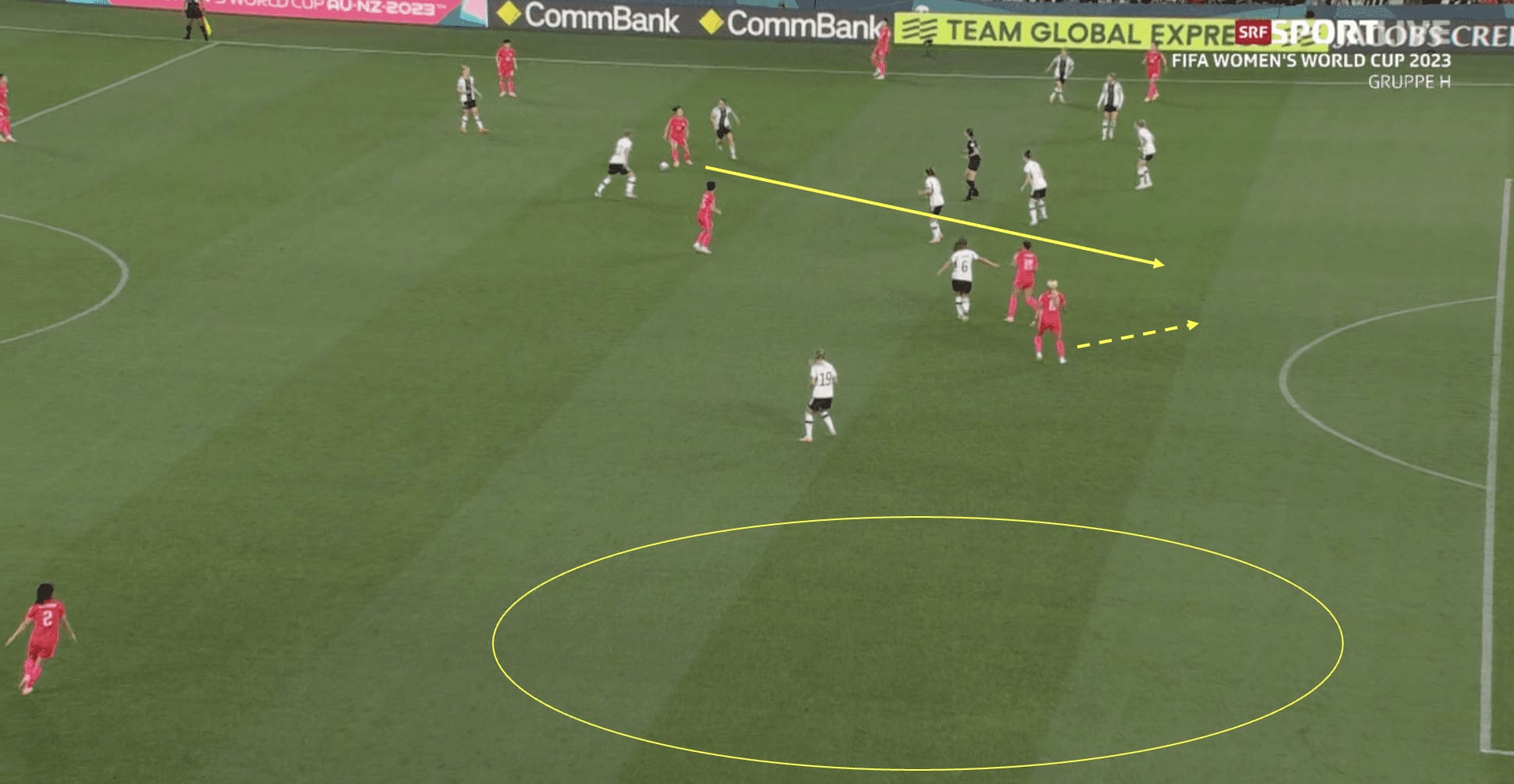
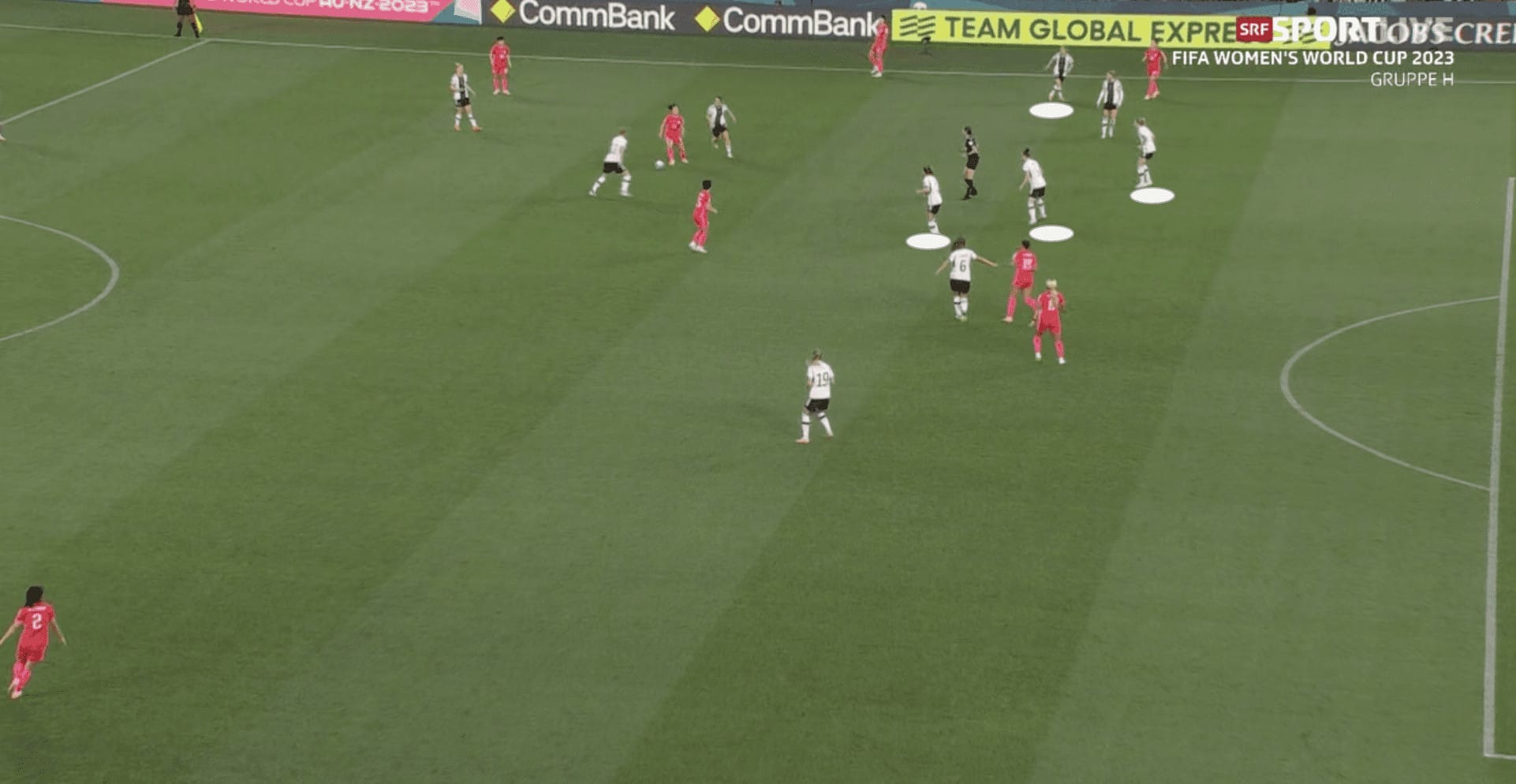
The images above depict the play leading up to the South Korean goal. We can see how narrow the German defenders have gone – we can see the four defenders highlighted in the second image.
Midfielder Lena Oberdorf has also dropped back to try to mark a player whilst Bühl is in no man’s land, unsure whether to sit narrower or mark Choo Hyo-joo who has acres of space to run into. Instead, the South Koreans opt to play a defence-splitting pass to Cho So-huyn, who calmly placed the ball beyond Frohms.
From a German perspective, it was a poor goal to concede. We can see the defence in disarray, and there was a real lack of communication between the team. Players were unsure whether to step up to play offside, and no one was aware of where the South Korean players were.
“They are outstanding players – but they are not full-backs.”
The above quote is from South Korea Head Coach Colin Bell, who commented as he was describing his team’s tactical set-up in his post-match interview.
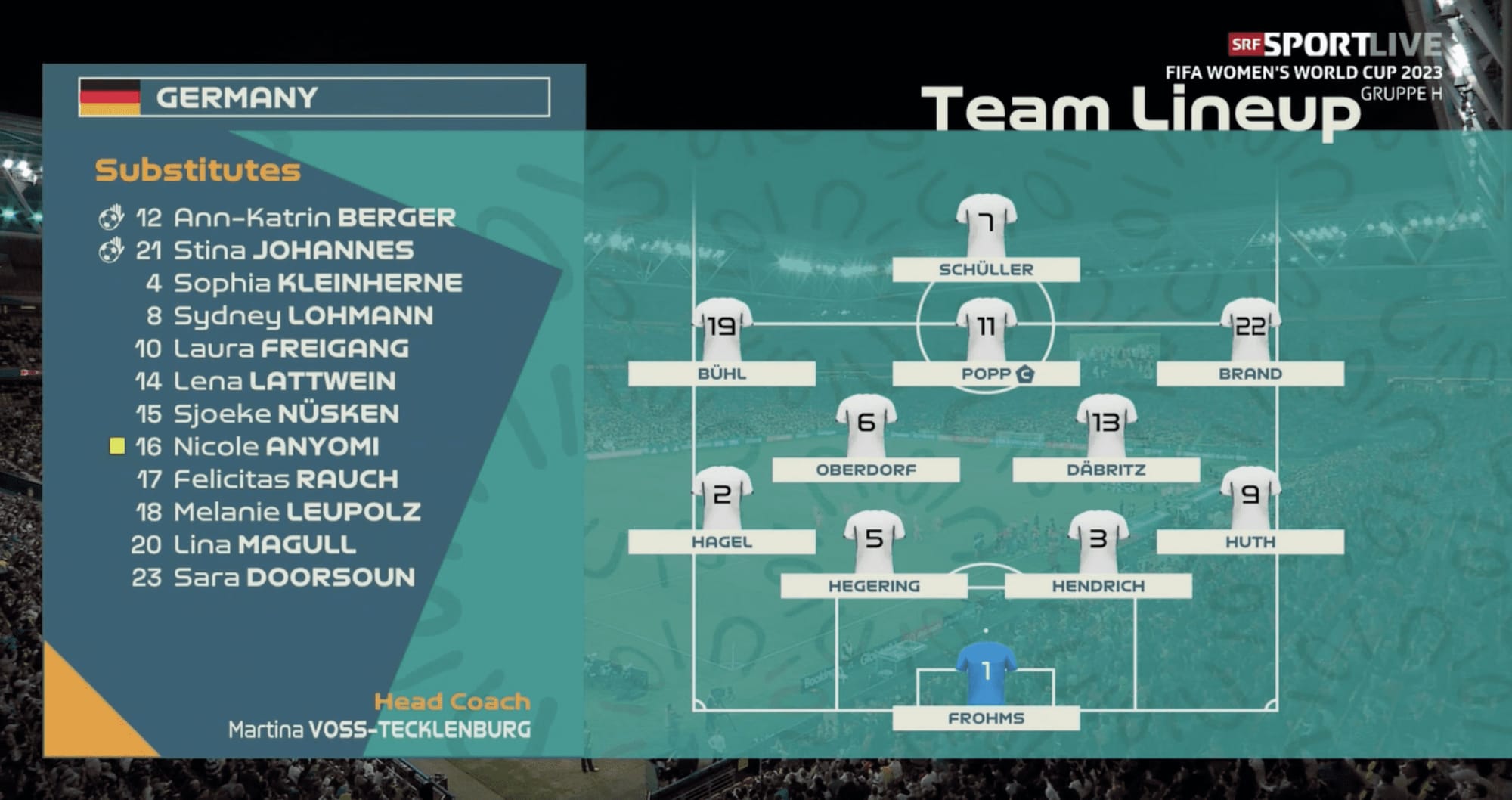
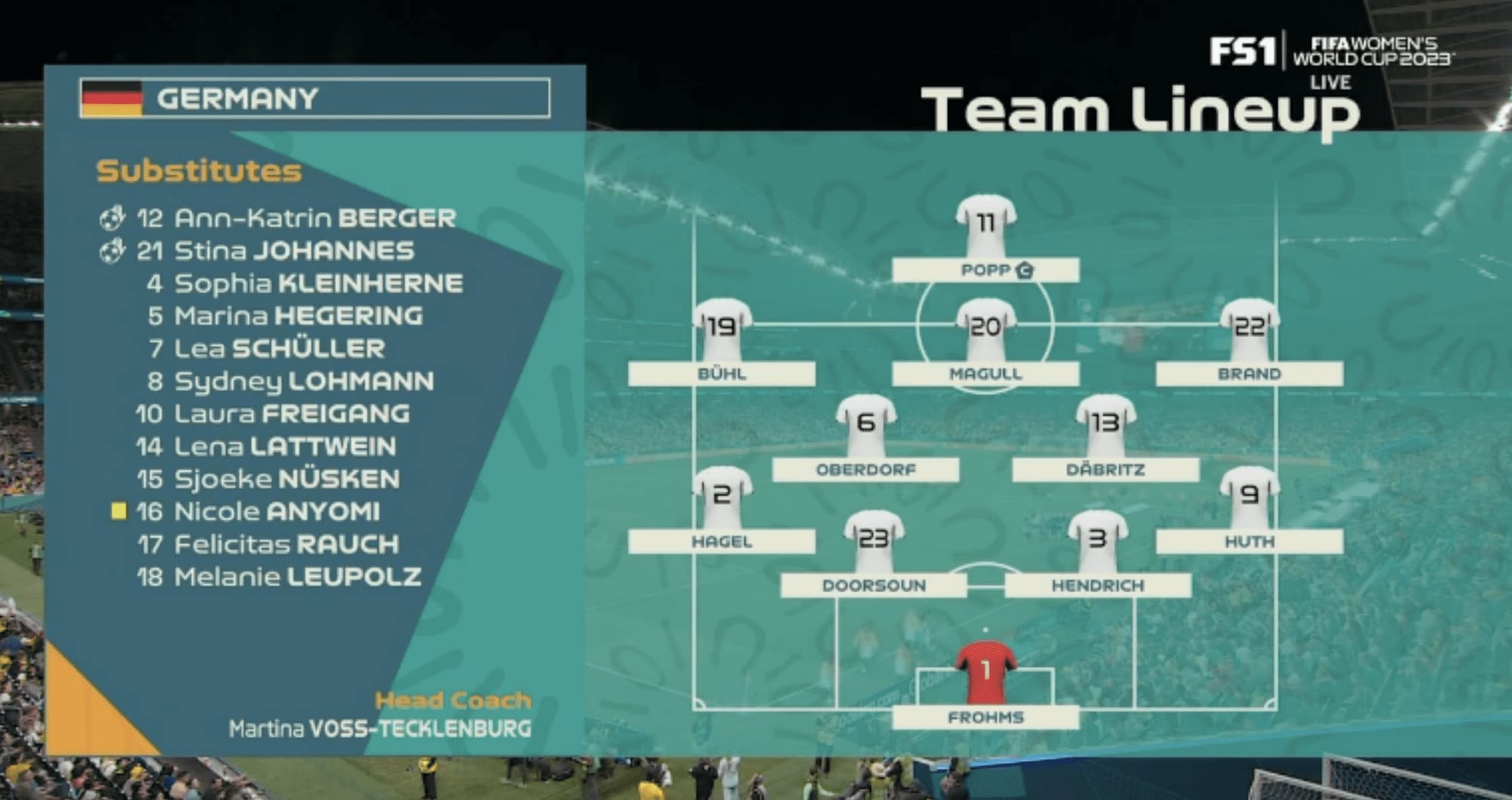
The graphics above show us the German starting lineups against Colombia and South Korea for both games.
Chantal Hagel, primarily a midfielder, came in at left-back for both games as Felicitas Rauch suffered an injury in training. Additionally, the vastly experienced Marina Hegering replaced Sara Doorsoun for the final group game as the Eintracht Frankfurt defender picked up an injury in the Colombia game.
The most significant loss for Germany is undoubtedly dynamic Bayern Munich right-back Giulia Gwinn. To add to Voss-Tecklenburg’s woes, defender Carolin Simon suffered the same fate in the warm-up game against Zambia, meaning the Germans were very low on numbers defensively.
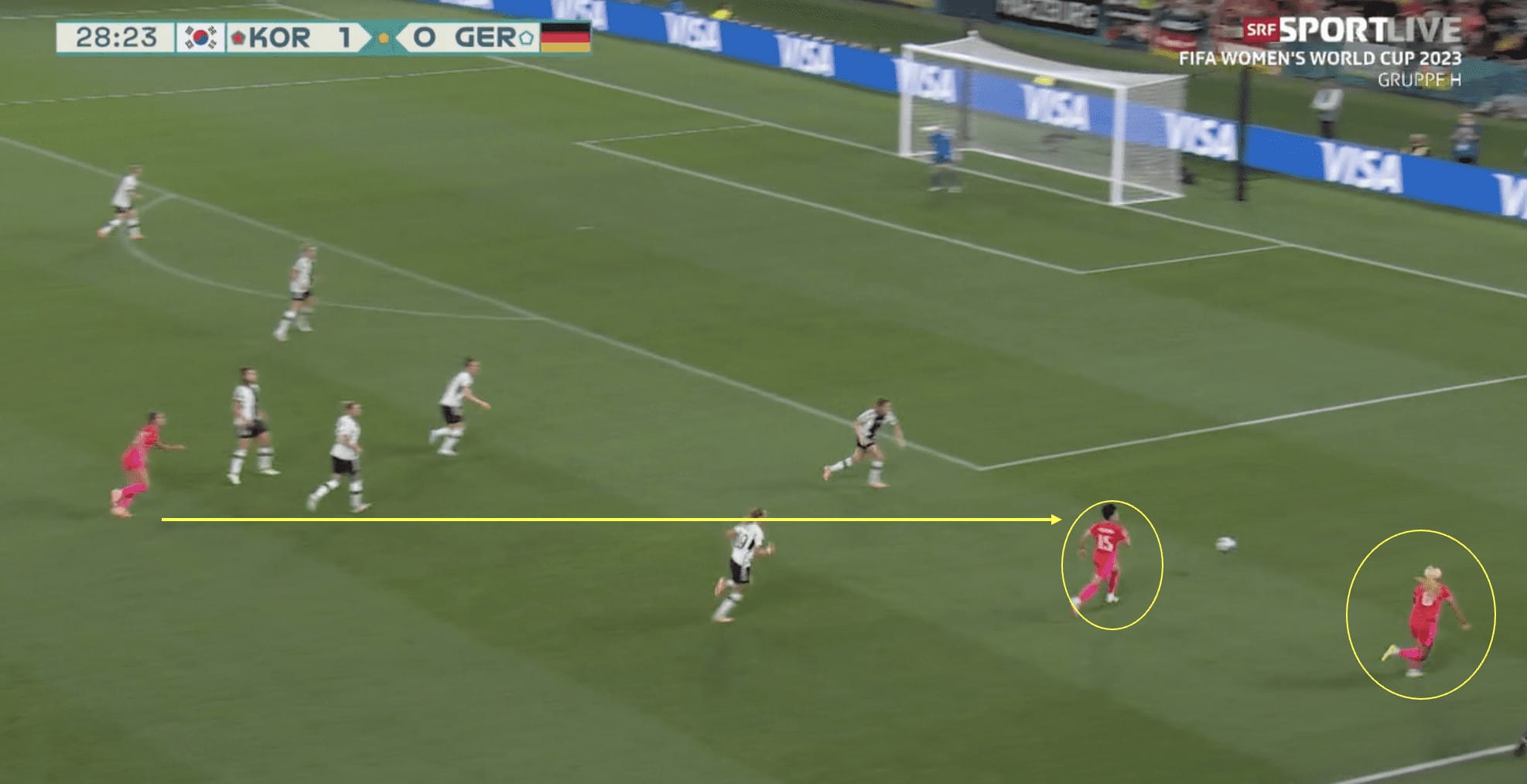
With two attacking players deployed as full-backs, opponents had plenty of opportunities to exploit Germany’s weaknesses. Both South Korea and Colombia aimed to utilise the space in the channels when transitioning from defence to attack and then in the attacking phase of play. We can see in the image above that the South Korean counterattack mainly focused on getting the ball out to their right flank as both Chun Ga-ram and Cho So-huyn were making runs down the wing. This was a consistent tactic used by South Korea throughout the game.
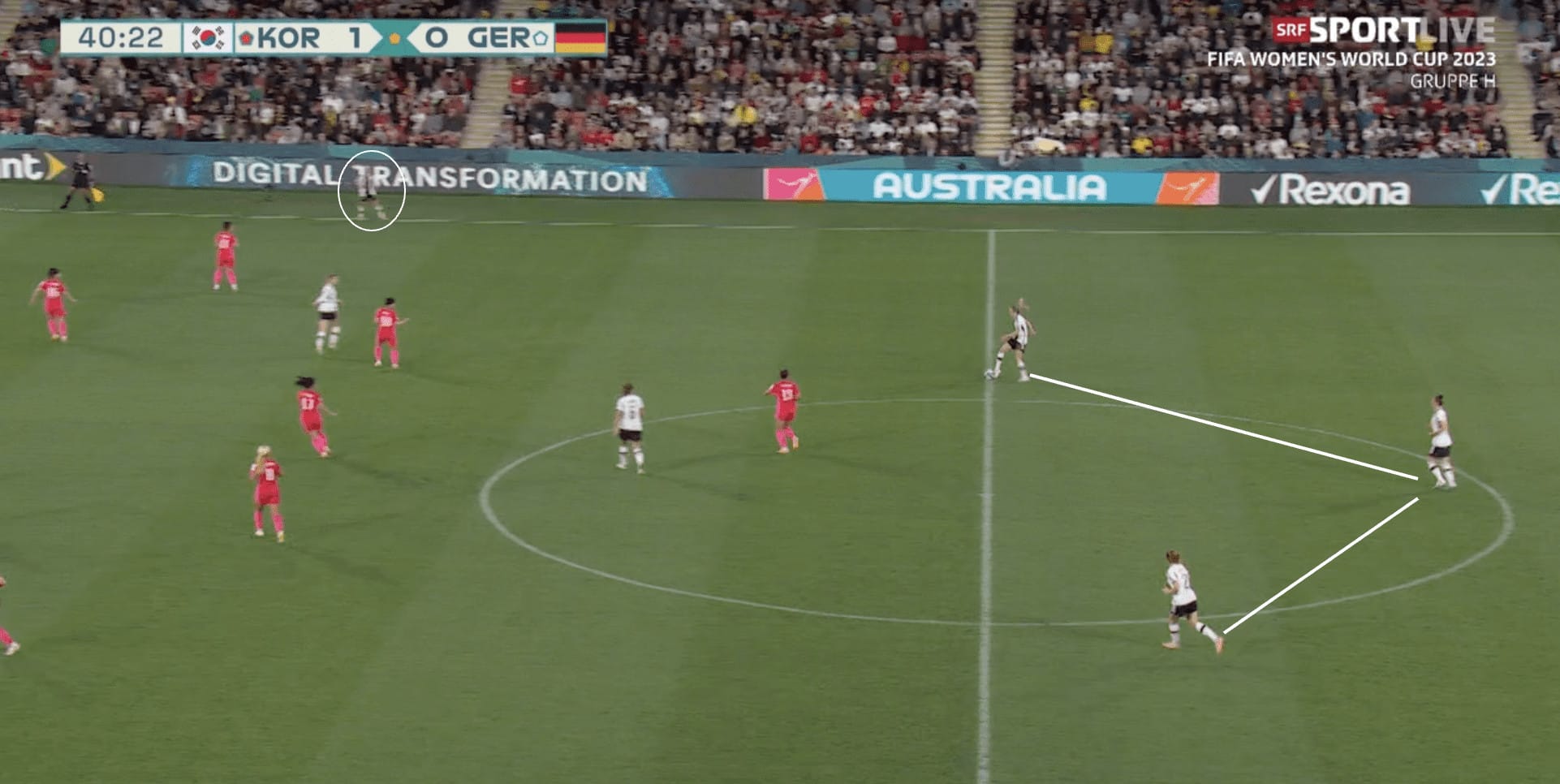
One reason South Korea could do this so well is largely down to Germany’s tactics when in possession. As the image above displays, to utilise Huth’s attacking abilities, she enjoyed the freedom to charge up and down the right flank as she saw fit.
Hagel would tuck in to form a back three to ensure the two centre-backs were not overexposed. The issue with this is that Germany became incredibly narrow, and a vast amount of space was available to exploit, mainly down their left flank, as Klara Bühl would look too cut inside when attacking.
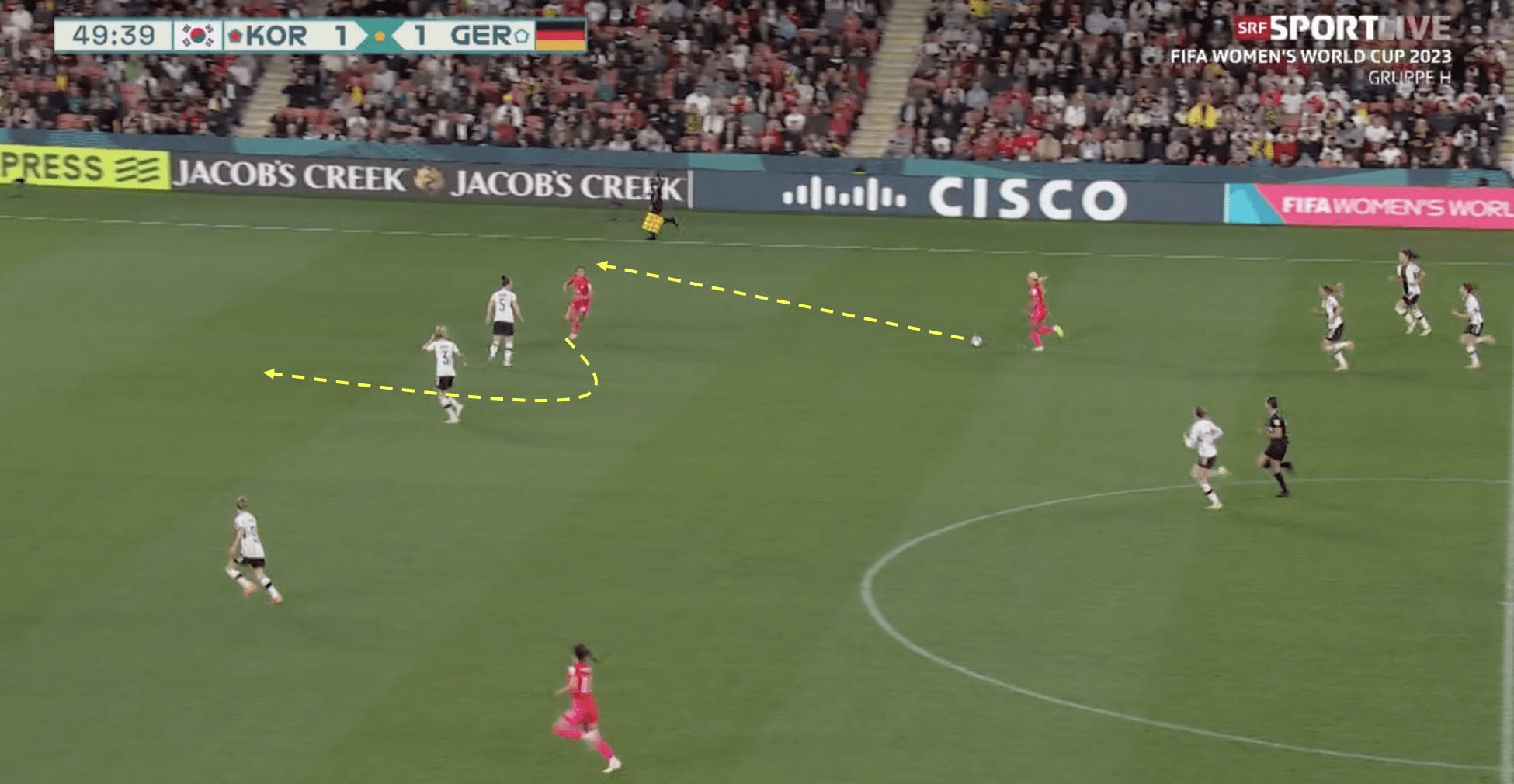
On the rare occasion that Hagel would be the one to get forward and Huth remained in the back three, South Korea still opted to attack the space left by the new Wolfsburg signing. Cho So-huyn aims to carry the ball down the flank in the image above. In addition to attacking the open space, this allowed the potential to exploit Svenja Huth’s weaknesses in defence.
As Hagel is out of position, Hegering must come across to put pressure on the attacking player. Therefore Hendrich moves across to cover the space left by Hegering, and as a result, Huth must move into a more central defensive position which, of course, leaves her vulnerable to dealing with crosses.
A similar scenario played out in the Colombia game, as shown below. Hagel, the German number 2, cannot prevent Ramirez from going past her, which then causes the German back line to shift across, leaving Linda Caicedo virtually unmarked for Colombia.
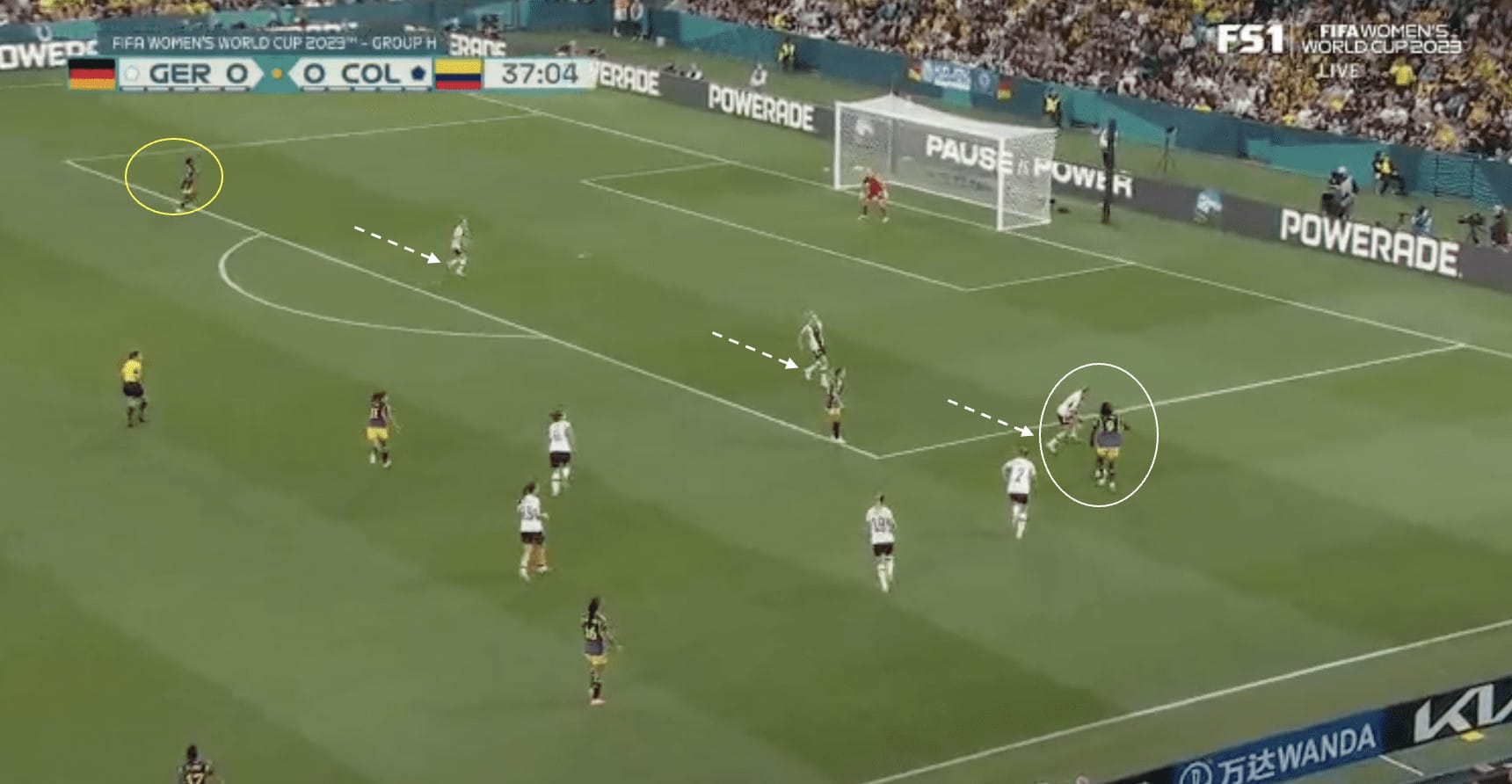
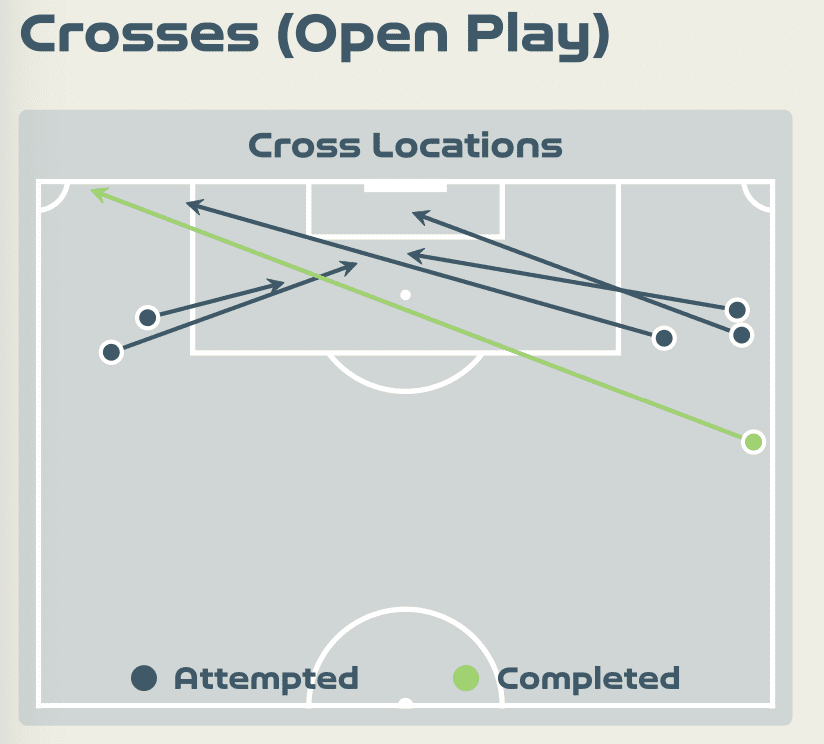
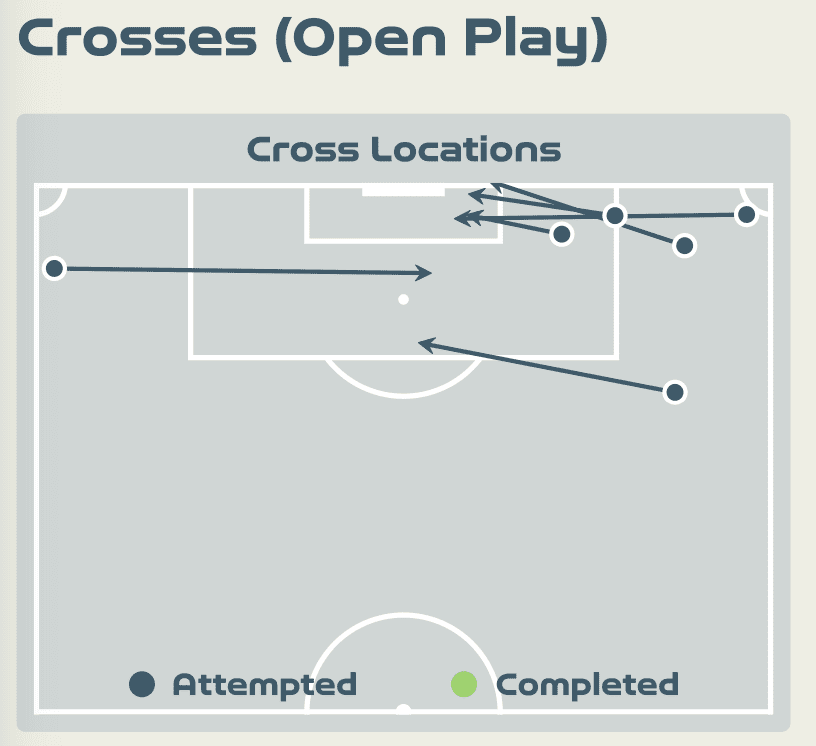
The above graphics further confirm how both South Korea and Colombia targeted their attacks to exploit the space in behind the German left back.
Isolated wide players
During the Colombia game, we saw hesitancy from Voss-Tecklenburg’s team, particularly in the attacking phase. Huth was reluctant to offer overlapping runs down the right because she focused on marking Real Madrid starlet Linda Caicedo throughout the game. This often meant that Brand ended up isolated, allowing Colombia to neutralise her attacking threat, as shown below.
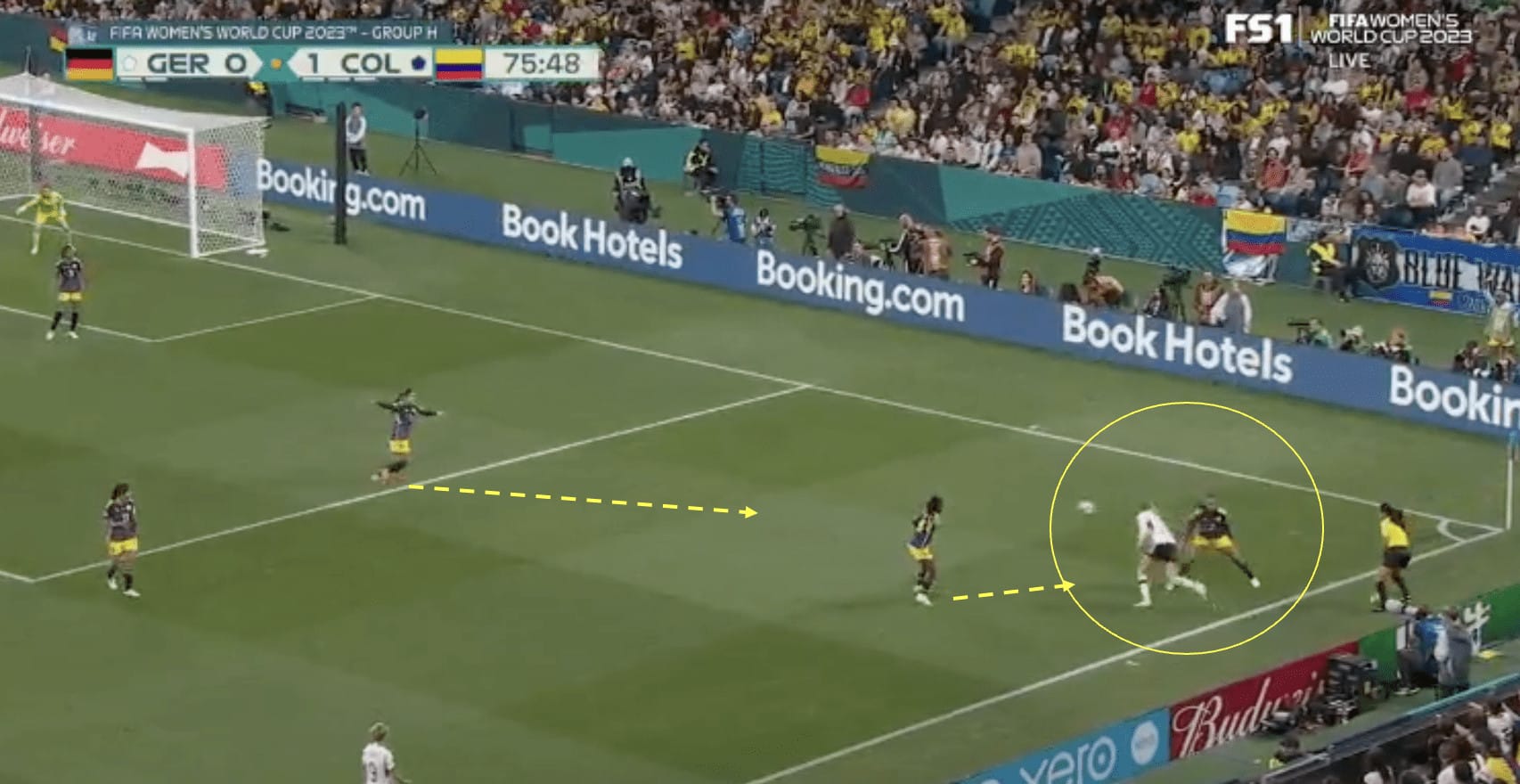
As a result, Germany often played relatively narrow, as seen in the image below. This enabled Colombia to comfortably defend their attacks for most of the game as they deployed two defensive midfielders who could prevent the likes of former PSG midfielder Sara Däbritz from having any influence on the game.
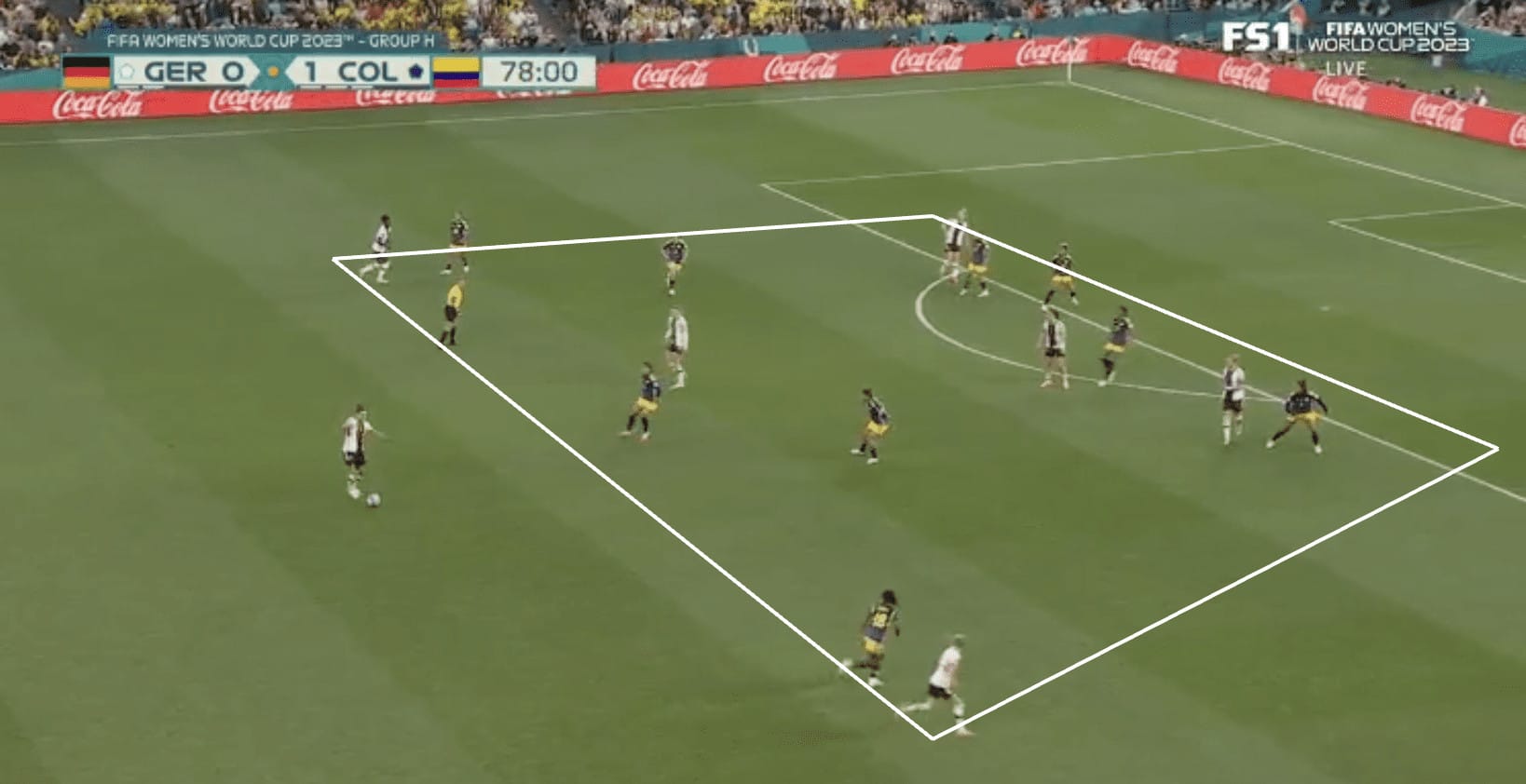
The defensive midfielders were also used to shield the back line and cut off passing lanes in central areas. Additionally, Colombia forced Germany to swing crosses in from deep or from the half-spaces, which were much easier to deal with as there were several players back defending who were available to clear their lines.
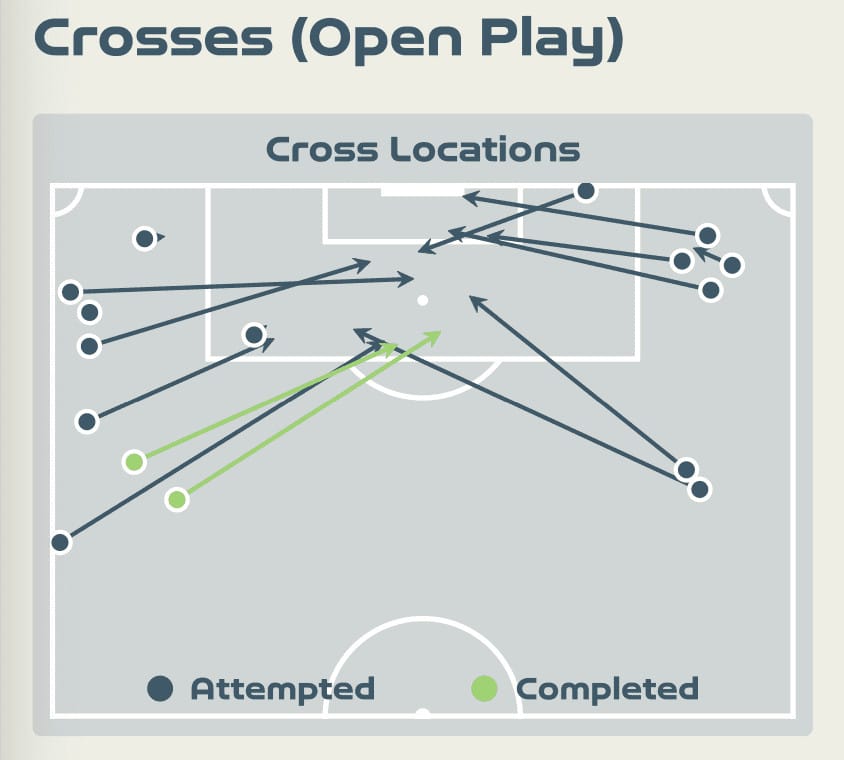
After a slow start in the game against South Korea, DFB Frauen did regroup and started to create chances from the wide areas, as we typically expect from them. The German central midfielders stayed very narrow and close together, which of course, attracted the attention of the South Korean midfielders. They were then able to work the ball out wide and get crosses into the box for Popp to attack, as indicated below.
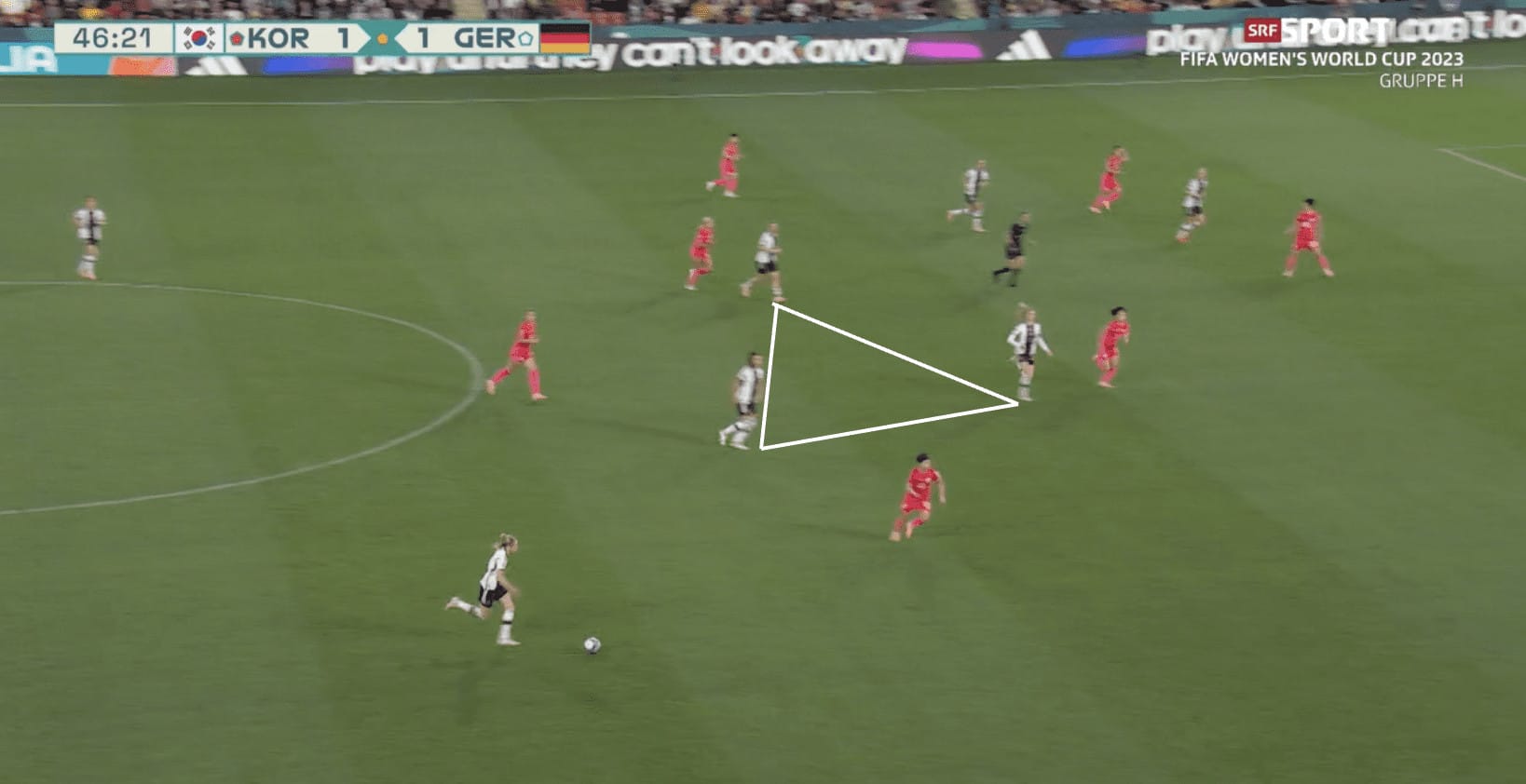
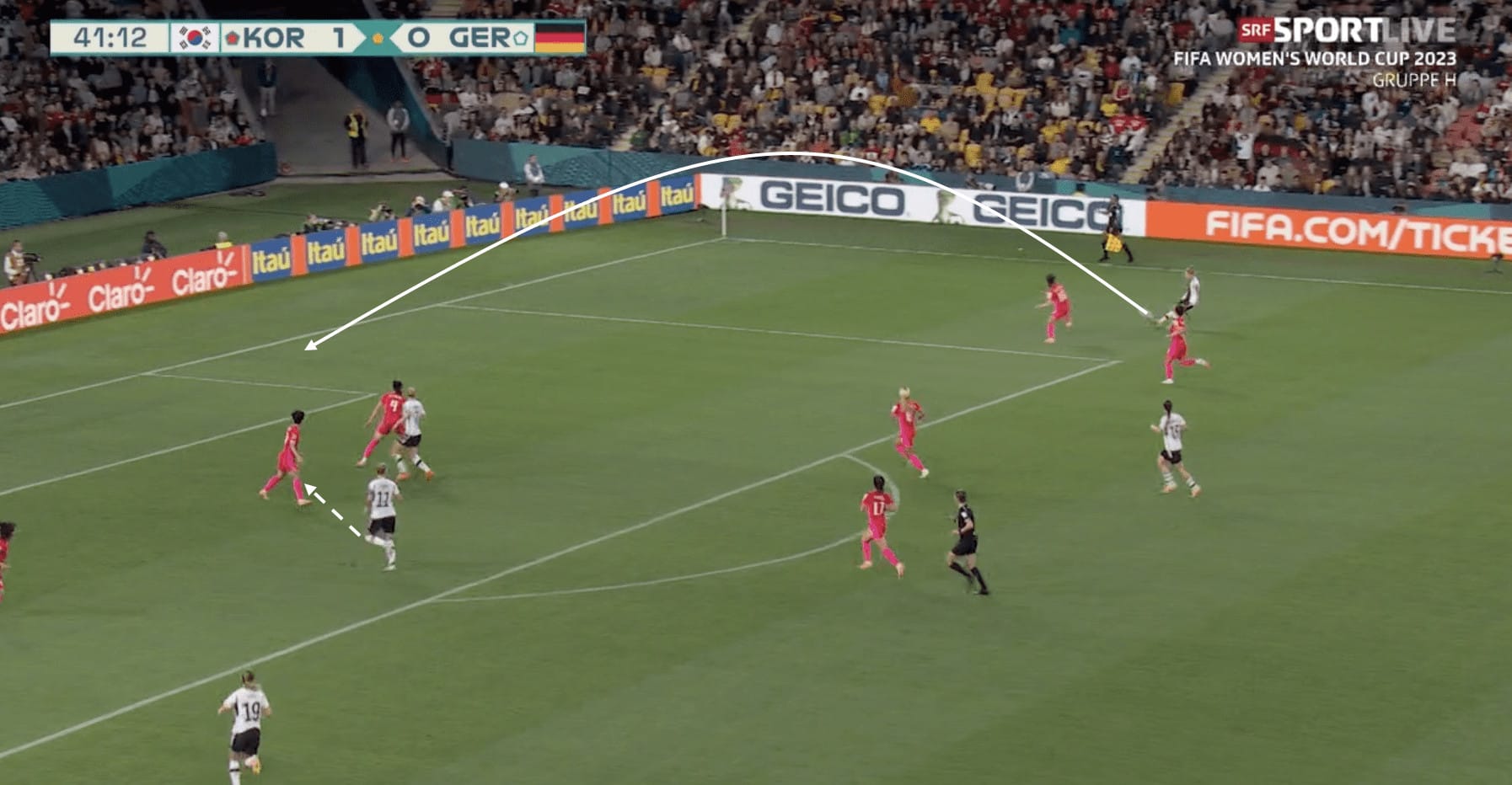
During the second half, Germany were able to generate a higher number of crosses into the box; they made 21 crosses throughout the game and were reasonably accurate, with ten of them being ‘complete’ (via the FIFA Training Centre match report). Colin Bell had an answer to this, though most of Germany’s crosses were understandably aimed at Alexandra Popp due to her undisputed aerial abilities. To counter this, Bell sent on Park Eun-sun, who is South Korea’s tallest player at six feet tall. She is typically a striker but came on in this game tasked with specifically marking Popp.
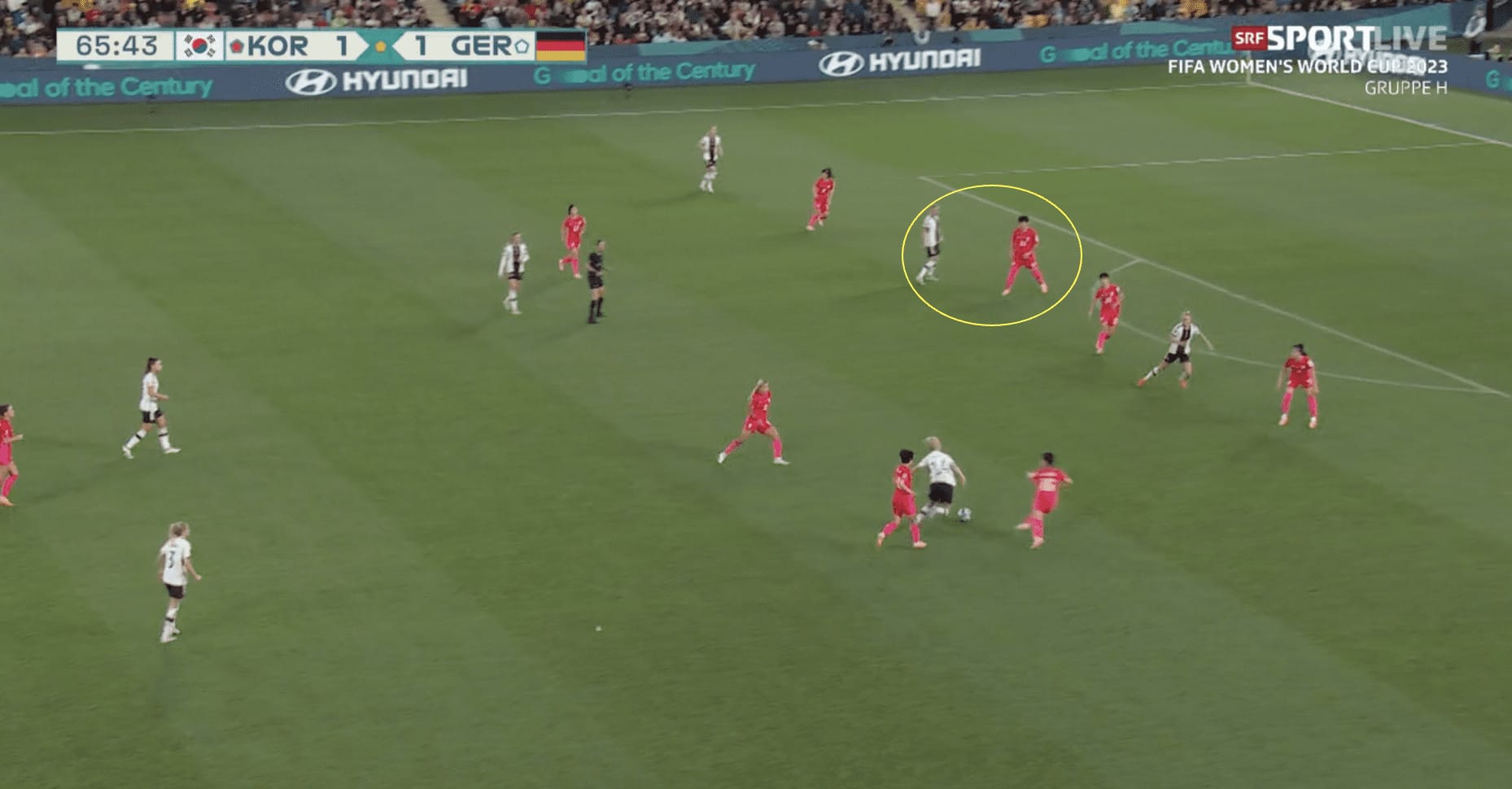
This was very effective and largely nullified the threat of Popp. What is interesting, though, is that Germany didn’t have an alternative way of playing. Despite knowing that South Korea had figured them out, still, the crosses came in and were mostly headed away. Only through Sydney Lohmann’s individual creativity did Germany look like scoring in the second half.
Under pressure
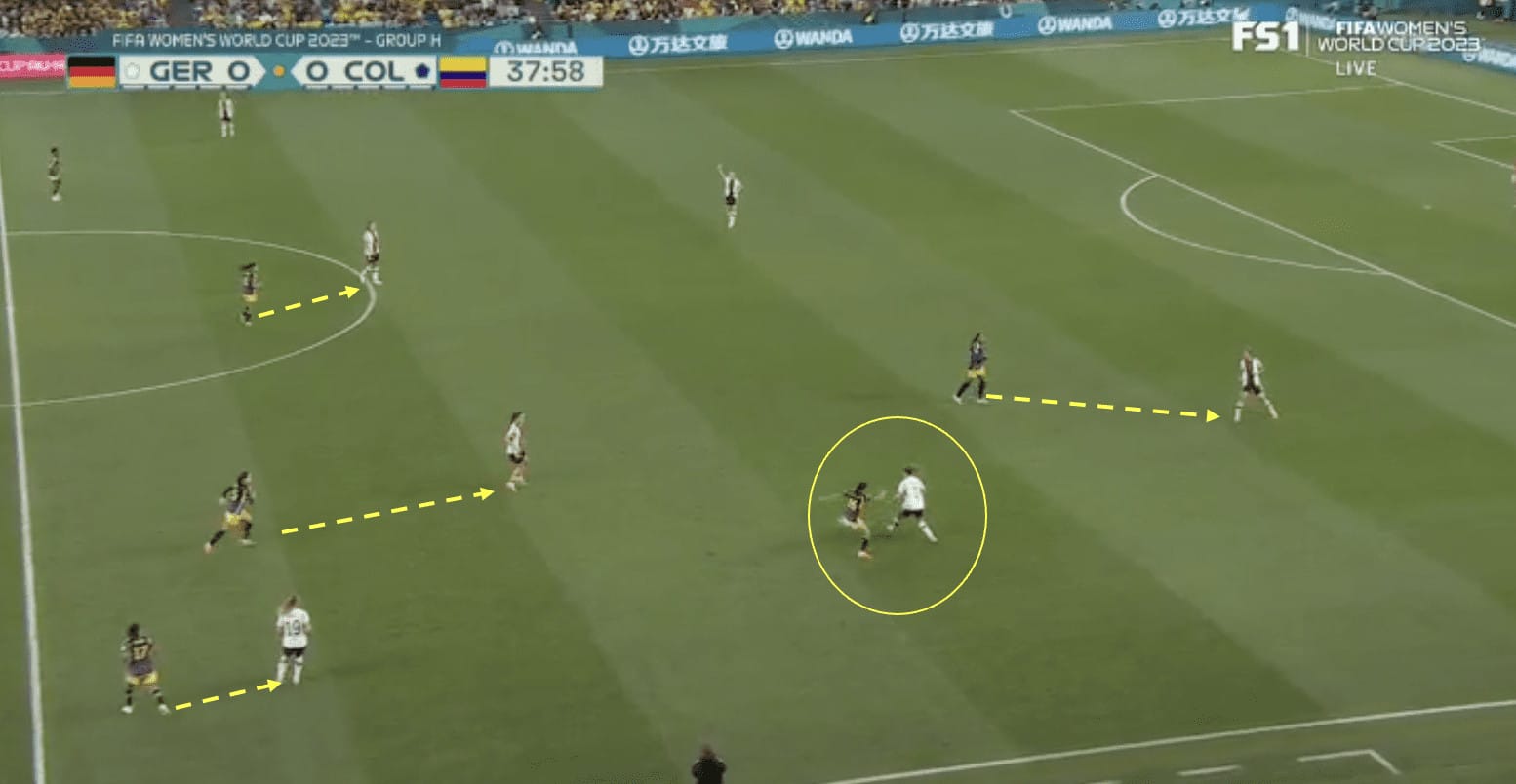
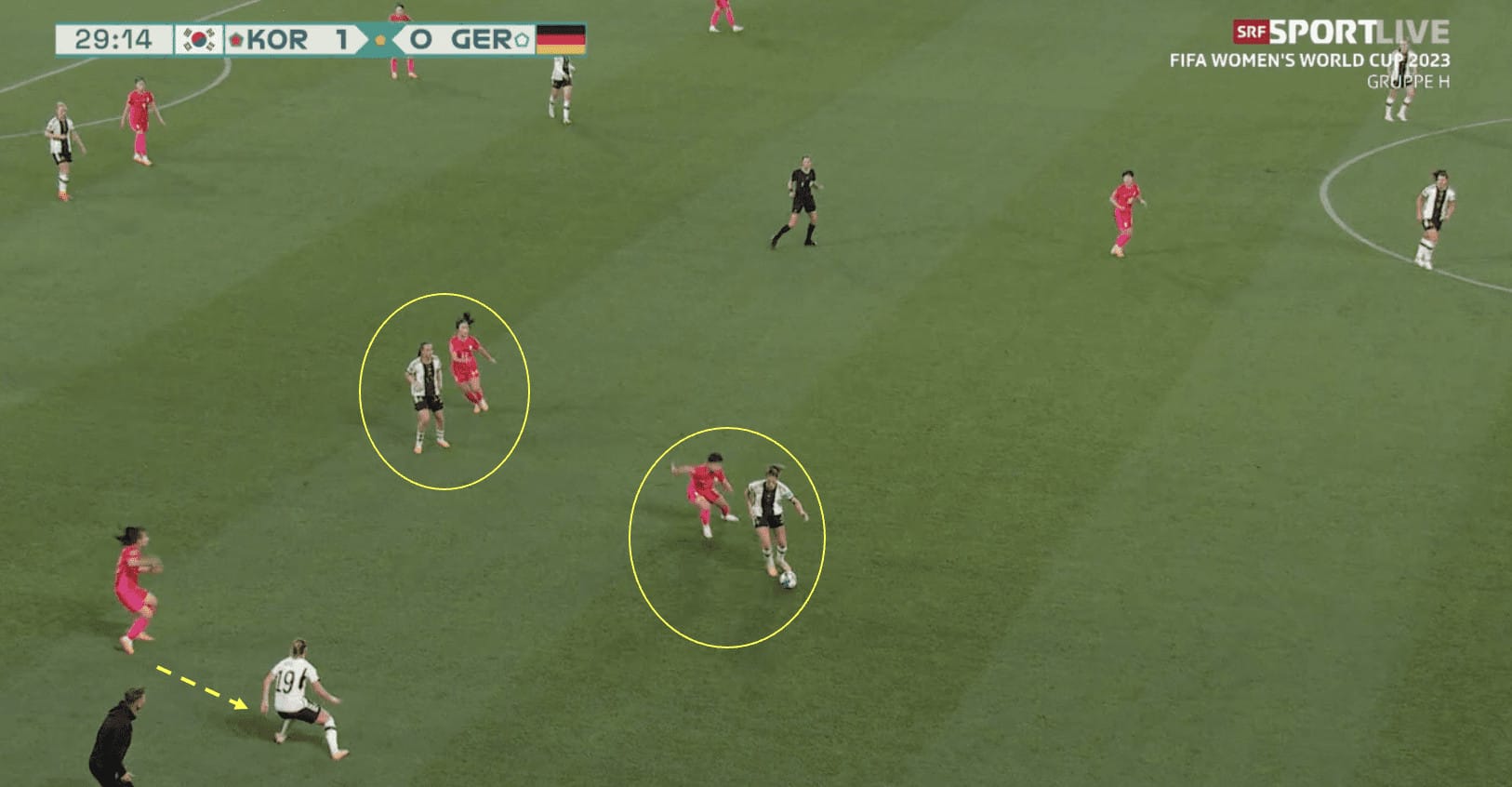
Germany enjoyed a lot of possession in both games, 55.8% against Colombia and 60.2% against South Korea. That doesn’t mean they had it easy, though; throughout each game, the opposition looked to initiate an aggressive press that forced the Germans to make mistakes such as executing passes poorly or simply preventing them from having time and space to play.
An aggressive press can disrupt the rhythm and composure of the opposition team. In both images above, Colombia and South Korea pressed as a team and were able to cut off passing lanes.
In the image from the Colombia game, with nowhere to pass the ball, Germany turnover possession and leave themselves vulnerable to the counterattack. This press led to turnovers in dangerous areas, allowing the Colombian team to capitalise on defensive errors and create scoring chances.
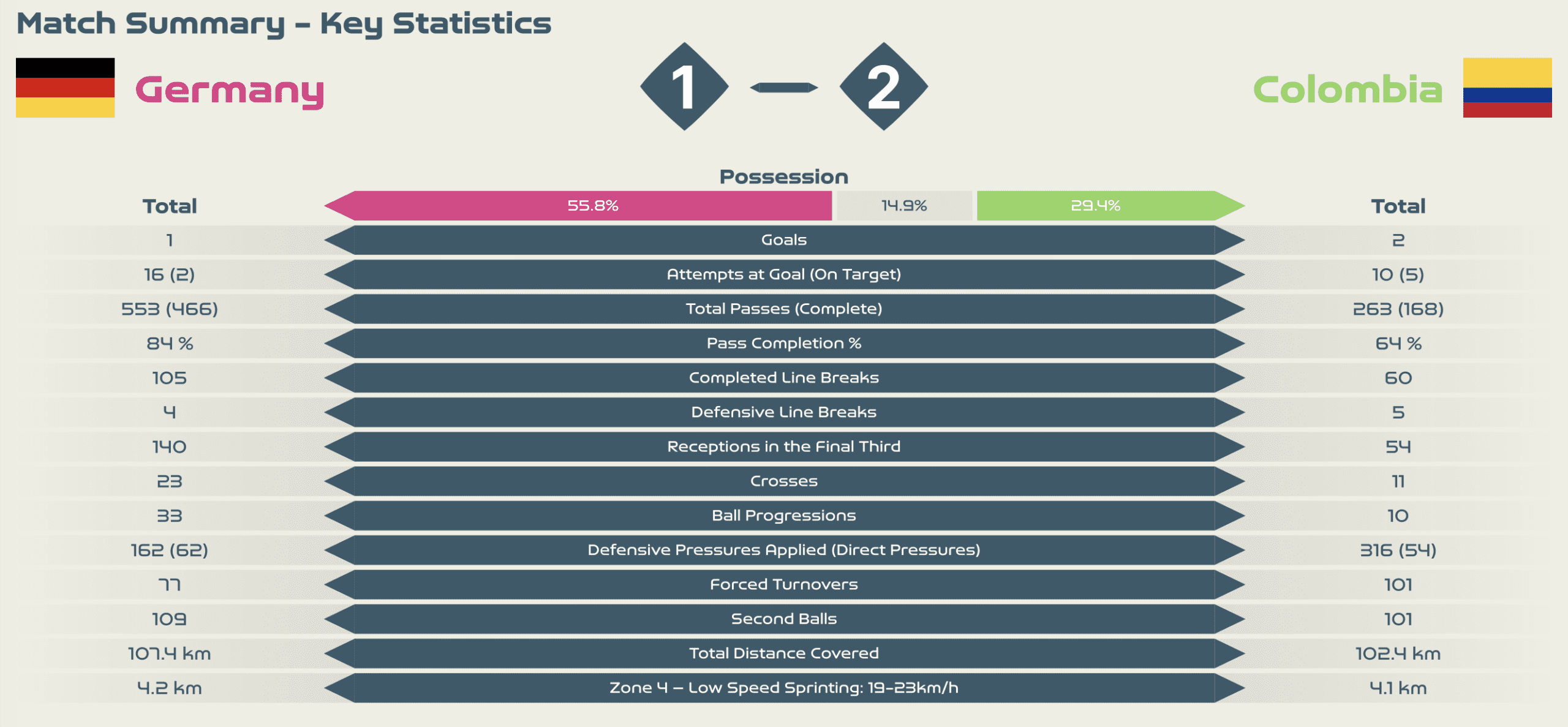
We can see from the statistics above that Colombia applied 316 defensive pressures over the course of the game.
By comparison, South Korea did not press as high as the South Americans but looked to initiate the press when Germany were in the defensive half. In the image from the final group game, the Korean press forced Germany to misplace passes and caused them to have to counter-press or, if that failed, transition from attack to defence.
Additionally, an aggressive press can allow the ‘underdogs’ to exploit the potential weaknesses of their stronger opponents. Even the most skilled teams can struggle under high-intensity pressure, especially if they are not accustomed to facing such tactics regularly.
Moreover, we must consider the psychological impact on the German team. When they were constantly under pressure and found it challenging to escape the opposition pressing trap, it caused incredible frustration. This affected the smoothness of the German build-up play, and they began to rush their passes due to them anticipating the incoming press. The Colombians and South Koreans were able to gain a significant psychological advantage by actively taking the game to the Germans and asserting dominance through pressing.
Conclusion
Germany will be incredibly disappointed to have exited the World Cup at the group stage. Even with the injuries to important players, they could have performed much better. This tactical analysis has seen us examine what went wrong for Voss-Tecklenburg and her players.
They came into this tournament with a clear identity and way of playing, which Colombia and South Korea were both able to use to their own advantage to limit the Germans in the attacking phase. The lack of an alternative way of playing is part of the reason why Germany struggled; with Popp specifically marked or the wide players unable to play accurate crosses into her, they ran out of ideas.
This is probably the biggest shock of them all, the favourites to win the World Cup departing at the group stage. There are plenty of things for Germany to unpack, but it’s highly likely that with all the talent at their disposal, they will come back even stronger and will look to prove a point at the next international competition.





Comments